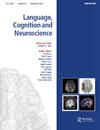情感神经语言学专题导论:理解大脑中情感和语言的相互作用
IF 1.8
3区 医学
Q2 AUDIOLOGY & SPEECH-LANGUAGE PATHOLOGY
引用次数: 0
摘要
情绪渗透到我们生活的方方面面,包括我们如何处理和使用语言。情感神经语言学是一个新兴领域,旨在统一神经语言学和情感神经科学的不同研究传统。本期特刊概述了词汇语义、句法和语用层面的最新发展。这11项研究探讨了情绪概念的具身习得、它们在大脑中的网络表征、它们在第一语言和第二语言中的表征以及注意焦点的作用。他们还详细说明了情感内容如何与形态句法加工相互作用,个体间差异如何决定句子加工中句法或情感的首要地位,以及情感影响如何在准现实交际环境中对语言的多模态整合中发挥作用。总的来说,这一系列研究涵盖了情感神经语言学领域的现状,为更正式地将情感多层次地整合到语言模型中奠定了基础。本文章由计算机程序翻译,如有差异,请以英文原文为准。
Introduction to the special issue affective neurolinguistics: understanding the interaction of emotion and language in the brain
Emotions permeate every aspect of our lives including how we process and use language. Affective neurolinguistics is an emerging field that aims to unify separate research traditions in neurolinguistics and affective neuroscience. This special issue provides an overview of recent developments, on the lexico-semantic, syntactic and pragmatic levels. The 11 studies address the embodied acquisition of emotional concepts, their network representation in the brain, their representation in the first versus second language as well as the role of attentional focus. They also specify how emotional content interacts with morphosyntactic processing, how inter individual differences determine the primacy of syntax or affect in sentence processing, and how emotional influences play out in the multi-modal integration of language in quasi-realistic communicative settings. In total, this collection of studies covers the status of the field of affective neurolinguistics, laying the groundwork for a more formal multi-level integration of affect into language models.
求助全文
通过发布文献求助,成功后即可免费获取论文全文。
去求助
来源期刊

Language Cognition and Neuroscience
AUDIOLOGY & SPEECH-LANGUAGE PATHOLOGY-BEHAVIORAL SCIENCES
CiteScore
4.50
自引率
13.00%
发文量
70
期刊介绍:
Language, Cognition and Neuroscience (formerly titled Language and Cognitive Processes) publishes high-quality papers taking an interdisciplinary approach to the study of brain and language, and promotes studies that integrate cognitive theoretical accounts of language and its neural bases. We publish both high quality, theoretically-motivated cognitive behavioural studies of language function, and papers which integrate cognitive theoretical accounts of language with its neurobiological foundations.
The study of language function from a cognitive neuroscience perspective has attracted intensive research interest over the last 20 years, and the development of neuroscience methodologies has significantly broadened the empirical scope of all language research. Both hemodynamic imaging and electrophysiological approaches provide new perspectives on the representation and processing of language, and place important constraints on the development of theoretical accounts of language function and its neurobiological context.
 求助内容:
求助内容: 应助结果提醒方式:
应助结果提醒方式:


